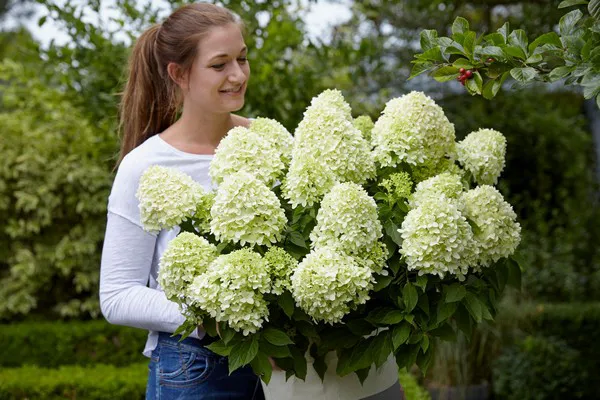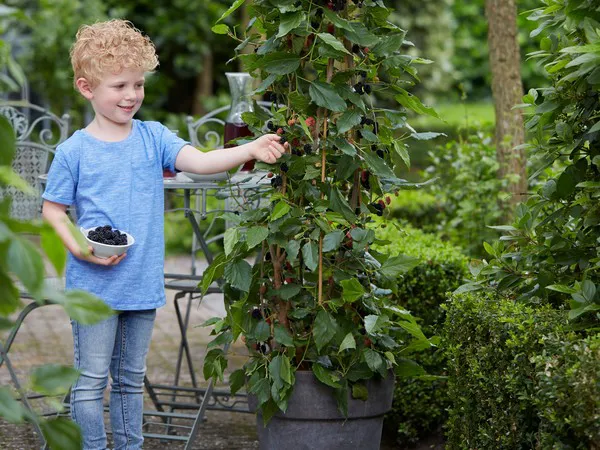With six novelties the company Plantipp this year faces the renowned novelties examination at the international nursery stock trade fair GrootGroenPlus. The fair takes place from 2nd till 4th October in Zundert, the Netherlands. The novelties will be examined on the day before the opening and of course, will be exhibited during the fair. "This examination is one of the most important signposts when talking about plant quality. It is carried out by the independent examination committee of the Royal Boskoop Horticultural Society (KVBC),” explains Plantipp's owner Peter van Rijssen. Additionally, this examination is the first step on the way to get, after an additional long-term field examination, the KVBC labelling "Premium Assortment".

Registered for the novelty examination has been, to start with, Hydrangea paniculata Little Spooky ('GRHP08'PBR). It is a dwarf hydrangea that only grows about 50 cm high and 30 cm wide and therefore brings the ongoing hydrangea trend to narrow balconies and into smaller borders. It is the right choice for mass planting in public spaces, too, as it is winter hardy up to -25° Celsius and tolerable to pruning. Little Spooky grows in sun and half shade and in all kinds of soil and carries full round panicles with white blossoms in summer.

The second novelty registered is Hydrangea paniculata Skyfall ('Frenne'PBR). It is comparable to the variety "Limelight“, but has essentially larger hyacinth-like petals. They start in white and later become a light pink. Skyfall is winter hardy till -30° Celsius even, is not picky about soil and tolerates sun and half shade. With a height of 1.20 m and a width of 70 cm this hydrangea is multiply deployable as solitary ornament on the balcony or patio, for mixed planters and borders as well as for mass planting.

For a Mediterranean atmosphere in the garden, Plantipp recommends usage of the variegated Juniperus scopulorum Blue Ivory (‘Klaverjun’PBR). The cream-colored new sprouts contrast nicely to the blue foliage. Blue Ivory has an upright growth habit and becomes about 2.50 m high and 50 cm wide. It is winter hardy till -20 ºC; pruning is not necessary. Blue Ivory likes a sunny place and tolerates all kinds of soil. It is suitable as solitary plant, for mixed compositions or hedges, for flower beds and planters.

A mulberry finally suitable for all garden sizes and impatient home gardeners as well is Morus rotundiloba Bonbonberry Mojo Berry ('Matsunaga'PBR). The compact dwarf variety stays at a handy height of about 1.5 m instead of shooting up to the usual 6 meters other varieties do. Additionally, it carries berries at the new wood, too, so that one can harvest from the first year on instead of having to wait five or six years. And the delicious berries suitable for jam, cake and much more ripen between May and September, not only over the usual three weeks period. Mojo Berry likes a fertile, well-drained place in the sun. It can be pruned in spring and is winter hardy up to -10° Celsius.

A star with many advantages from spring till Christmas season is according to Plantipp Pyracantha coccinea ‘Red Star’PBR. This evergreen Pyracantha carries white blossoms at the two-year-old branches in June which attract bees and butterflies. The berries appear in August, redden during September and will stay on the shrub until after Christmas. Red Star has less thorns than other Pyracantha and therefore can be variously used for decoration. But also as a hedge or solitary plant in the flower bed, the shrub is suitable. It grows up to 2 meters high and 1 meter wide and is very winter hardy up to -30° Celsius. Plant Red Star into a fertile, well-drained soil in sun or half shade.

The last variety enrolled by Plantipp is Thuja occidentalis Totem Smaragd ('Thucavlo'PBR), a thuja suitable as a solitary plant, for hedges, planters and flower beds. It branches densely and upright in a beautiful oval up to about 1.75 meters high and 50 cm wide. This "totem“-shape and the green foliage gave it its name. It is tolerable to sun, half shade and shade and winter hardy up to -20° Celsius. Pruning is possible, but not necessary.
For more information: Plantipp
Plantipp
Peter van Rijssen
Tel. + 31 6 55 88 19 00
[email protected]
www.plantipp.eu
